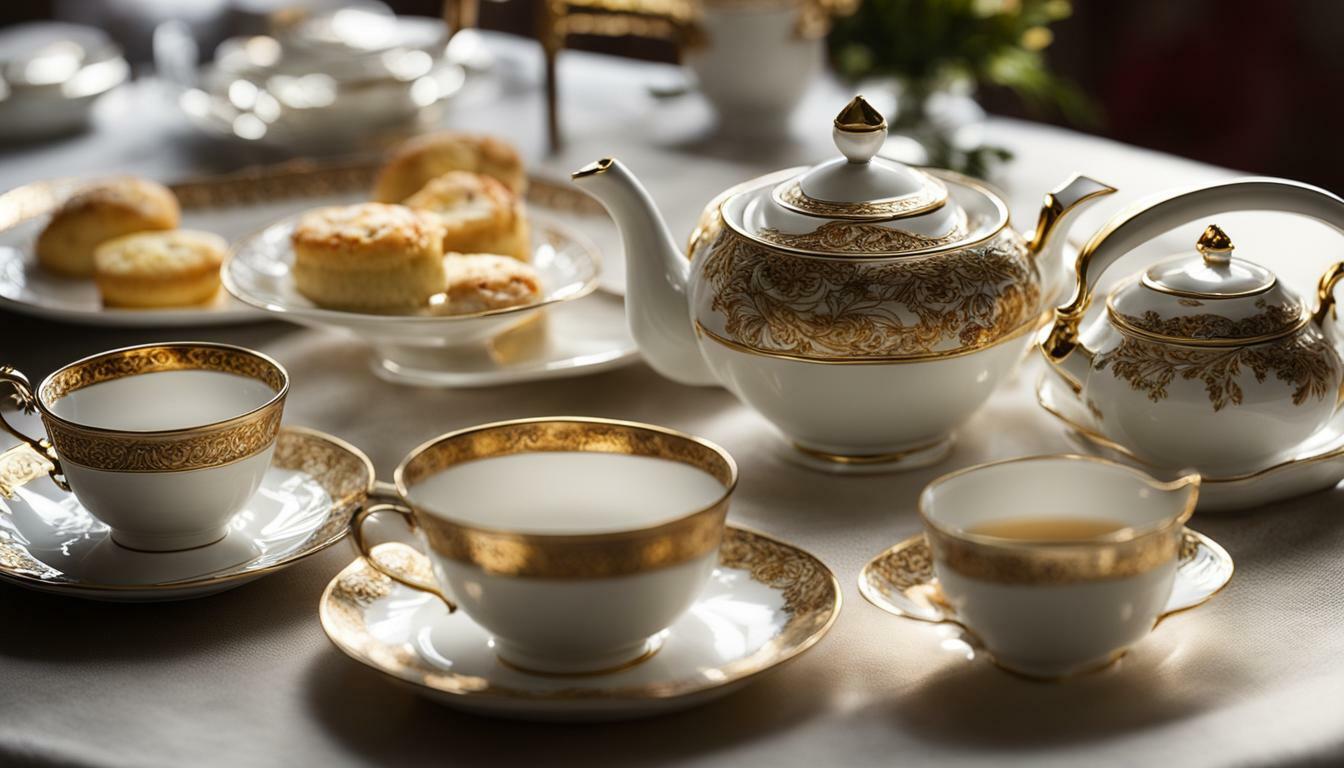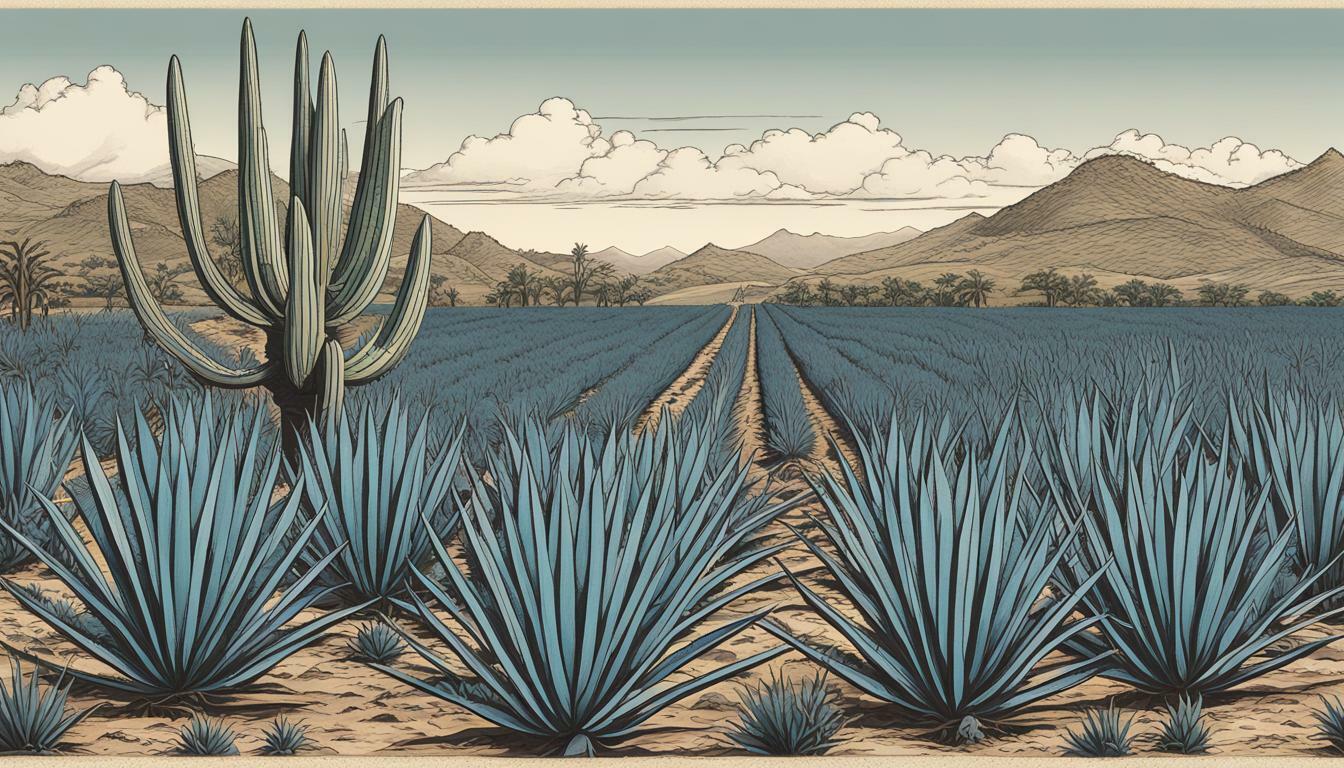British tea ceremonies have a rich history and culture, with Afternoon Tea and High Tea being two of the most well-known traditions. Although these terms are often used interchangeably, they are not the same thing. In this article, we will explore the key differences between Afternoon Tea and High Tea, as well as their origins, menus, and etiquette.
Key Takeaways:
- Afternoon Tea and High Tea are distinct British tea ceremonies with different origins, menus, and traditions.
- Afternoon Tea is a light meal typically served in the late afternoon, while High Tea originated as a more substantial evening meal for the working class.
- Understanding the difference between Afternoon Tea and High Tea adds depth to the rich culture of British tea ceremonies.
What is Afternoon Tea?
Afternoon Tea, also known as “low tea,” is a quintessentially British tradition that originated in the early 19th century as a way for the upper class to stave off hunger between lunch and dinner. Today, it is a popular social occasion enjoyed by people around the world, especially as a way to celebrate special occasions or catch up with friends.
The menu for Afternoon Tea typically consists of a variety of finger sandwiches, scones with clotted cream and jam, cakes, pastries, and, of course, a pot of tea. In fact, tea is the centerpiece of this tradition, with a variety of blends and flavors to choose from.
Etiquette is an important aspect of Afternoon Tea, with traditional customs including holding the teacup with the fingers on the handle, stirring the tea gently, and placing the napkin on one’s lap. Dressing smartly is also expected, with men typically wearing jackets and ties and women wearing dresses or suits.
Despite its association with the upper class, Afternoon Tea is enjoyed by people from all walks of life, making it a truly inclusive tradition.
What is High Tea?
Contrary to popular belief, High Tea does not refer to an elaborate formal tea ceremony. Instead, High Tea originated in the working-class households of Britain during the Industrial Revolution. It was a more substantial evening meal that included both tea and savory dishes.
The High Tea menu consists of hearty dishes like meat pies, quiches, sausage rolls, and other savory fare. This meal was traditionally served to workers returning home from a long day of labor. The inclusion of tea at this meal helped to ward off hunger and provide warm sustenance for the workers.
High Tea also has its own unique traditions and etiquette. This meal is typically served at a table with chairs, unlike the low tables and sofas common to Afternoon Tea. It is more informal than Afternoon Tea and often served in a family-style setting. High Tea is also less strict when it comes to etiquette, with a more relaxed dress code and less emphasis on proper manners.
Despite its humble beginnings, High Tea remains a beloved tradition in many parts of the UK. It is a testament to the ingenuity and resilience of the working-class people who invented it, and a tribute to the enduring power of tea as a comforting and nourishing beverage.
The Differences Between Afternoon Tea and High Tea
Afternoon Tea and High Tea are two distinct tea ceremonies with contrasting origins, menus, and social associations. While Afternoon Tea is an elegant, light meal traditionally served in the late afternoon, High Tea originated as a more substantial evening meal for the working class.
| Afternoon Tea | High Tea | |
|---|---|---|
| Timing | Afternoon, usually around 3-4pm | Evening, usually around 5-7pm |
| Menu | Light finger sandwiches, scones with clotted cream and jam, cakes, pastries, and tea | Hearty savory dishes like meat pies, quiches, sausage rolls, and tea |
| Formality | Formal or semi-formal | Less formal |
| Social Classes | Upper class and aristocracy | Working-class |
The key differences between Afternoon Tea and High Tea lie in their timing, menu, formality, and social associations. Afternoon Tea is a refined and elegant affair that usually takes place in luxurious hotels or tea rooms and is associated with the upper class and aristocracy. In contrast, High Tea has more of a working-class association and is typically less formal than Afternoon Tea. The menu for High Tea is more substantial, including heartier savory dishes and tea, and it is usually served in the early evening hours.
Understanding the differences between Afternoon Tea and High Tea can add depth to your appreciation for the rich culture of British tea ceremonies.
The Similarities Between Afternoon Tea and High Tea
Despite their differences, Afternoon Tea and High Tea share some similarities.
Both tea ceremonies feature tea as a central component, with a pot of freshly brewed tea being served at the table. Additionally, both traditions offer a break in the day, providing a moment of relaxation and socialization for those who partake.
Another similarity is the emphasis on the presentation of food and drink. In both Afternoon Tea and High Tea, the food is arranged and displayed in an aesthetically pleasing manner, often on tiered stands or platters.
Furthermore, both tea ceremonies have evolved over time to reflect modern tastes and lifestyles. Contemporary interpretations of Afternoon Tea and High Tea can be found in tea rooms and upscale hotels throughout the world, offering a unique twist on traditional menus.
Modern Interpretations and Variations
As with any longstanding tradition, Afternoon Tea and High Tea have evolved to keep up with modern tastes and lifestyles. Today, you can find many contemporary interpretations and variations of these tea ceremonies.
Themed Teas
One popular modern take on Afternoon Tea is the themed tea. Themed teas offer a unique twist on the classic menu and decor, incorporating elements of popular culture or seasonal themes. For example, you might attend a Harry Potter-themed tea, complete with Butterbeer and Hogwarts-inspired treats, or a Christmas-themed tea with gingerbread scones and cranberry tea. (difference between afternoon tea and high tea)
Luxurious Hotel Tea
Many upscale hotels now offer their own take on Afternoon Tea, with extravagant menus and luxurious settings. These teas often incorporate more modern cuisine and culinary techniques, with dishes like truffle macarons and foie gras terrine. Plus, the elegant surroundings make for a truly indulgent experience. (difference between afternoon tea and high tea)
High Tea with a Twist
While High Tea may be less popular than Afternoon Tea today, it has not been forgotten. Some restaurants and tea rooms offer their own new twists on the classic high tea menu, incorporating more vegetarian or globally-inspired dishes. For example, you might find a high tea with samosas and chai tea, or a vegan high tea with tofu quiches and vegan scones. (difference between afternoon tea and high tea)
Whether you prefer the classic tradition or a more modern take, there is no denying the enduring charm of Afternoon Tea and High Tea. These beloved tea ceremonies continue to inspire and delight tea drinkers around the world. (difference between afternoon tea and high tea)
Conclusion
Understanding the difference between Afternoon Tea and High Tea is an important aspect of British tea culture. While Afternoon Tea is a light meal traditionally served in the late afternoon, High Tea is a more substantial evening meal that includes tea and savory dishes.
Despite their differences, both tea ceremonies share a common element, the inclusion of tea as a central component. As these tea traditions continue to evolve in the modern age, contemporary interpretations and variations have arisen, which include themed teas, afternoon teas at luxurious hotels, and unique twists on traditional menus.
Overall, the history, traditions, and etiquette associated with Afternoon Tea and High Tea add depth and richness to the culture of British tea ceremonies. By understanding the differences between these two tea ceremonies, we can gain a greater appreciation for their unique heritage.
FAQ
Q: What is the difference between Afternoon Tea and High Tea?
A: Afternoon Tea is a light meal traditionally served in the late afternoon, while High Tea is a more substantial evening meal. Afternoon Tea originated as a way to stave off hunger between lunch and dinner, while High Tea originated in working-class households during the Industrial Revolution.
Q: What is typically served during Afternoon Tea?
A: Afternoon Tea typically consists of finger sandwiches, scones with clotted cream and jam, cakes, pastries, and a pot of tea.
Q: What is typically served during High Tea?
A: High Tea usually includes dishes like meat pies, quiches, sausage rolls, and other hearty fare, along with tea.
Q: What are the similarities between Afternoon Tea and High Tea?
A: Both Afternoon Tea and High Tea include tea as a central component, and both are part of British tea culture.
Q: How have Afternoon Tea and High Tea evolved over time?
A: Over time, both Afternoon Tea and High Tea have adapted to modern tastes and lifestyles. There are now themed teas, afternoon tea at luxurious hotels, and unique twists on traditional menus.
 Skip to main content
Skip to main content


